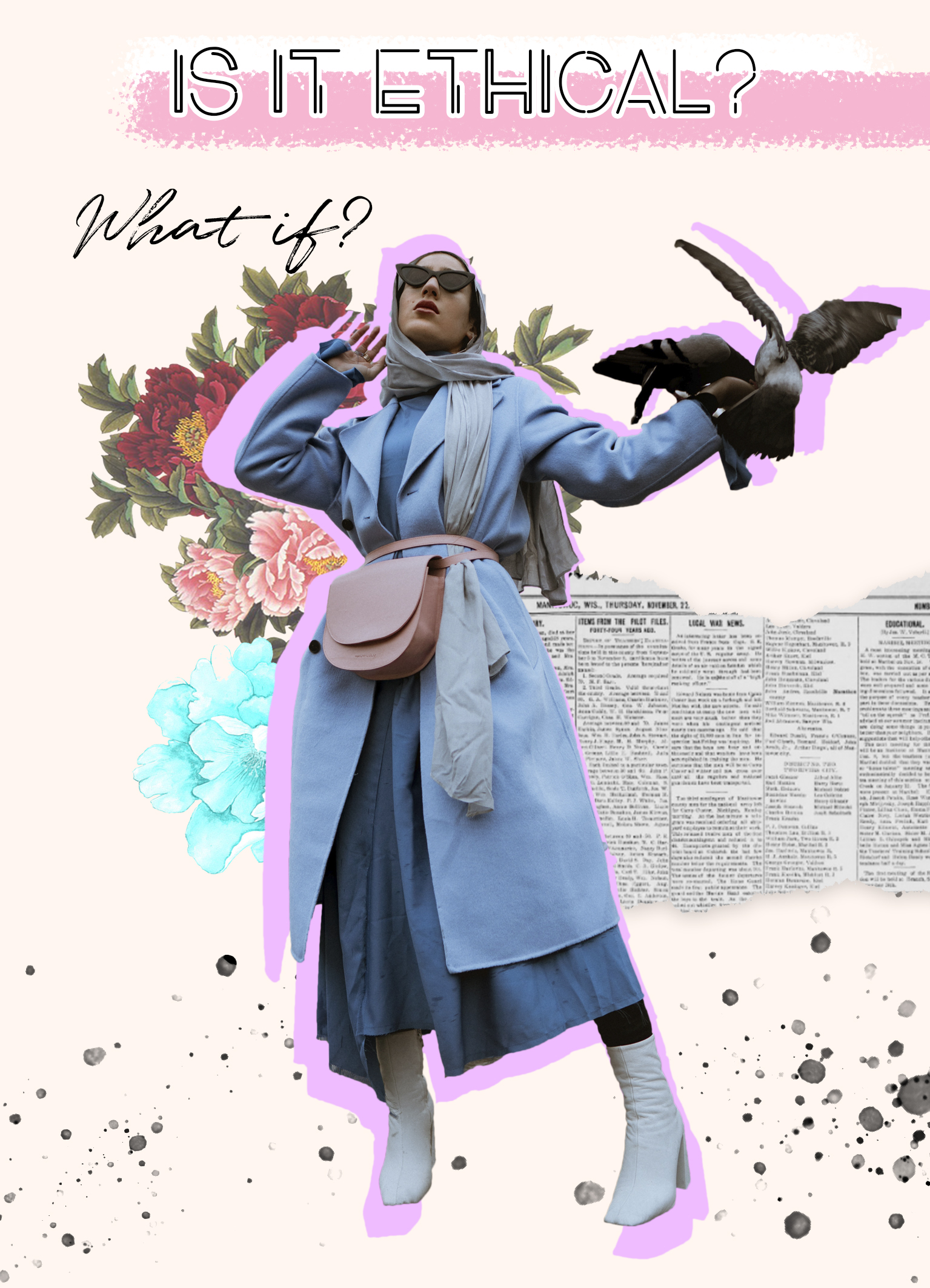During our quest for consumers’ fabric consciousness on the streets of Paris, we realized one fundamental thing: whilst being asked about fur, “cruel, barbaric, ew of course not…” are the words that came flowing out. But when the subject changed to leather? “sometimes, if it’s pretty, I love animals but… yes, I still wear leather” were the common verdicts we received.
While it’s true that wearing real fur can be viewed as an atrocity, leather, however, doesn’t attract the same reaction. In fact, people would proudly boast about their new authentic pair of snakeskin boots, or their limited edition (real) crocodile skin bag.
But why should leather get any less awareness or protection than fur does? It’s time to start a conversation.
First Misconception: Not A By-Product, But A Co-Product
Contrary to popular believe, leather is not a by-product of the meat industry. So the excuse of leather is a form of recycling, let nothing go to waste, more sustainable… is no longer valid. Sad to have to confirm that we are not doing the earth any good by purchasing these pelts.
Prepare for the ugly truth: selling animal skins is very profitable, sometimes even more than the meat itself, contributing significantly to the commercial viability of the business. Make no mistake in forgetting that we are living in a profit-driven industry, by purchasing any leather piece, you are giving farmers more incentive to keep the shady slaughtering business going. And if the animal skin is the one harvesting the big bucks, it’s definitely no longer a by-product, but has become the most important co-product of the meat industry.
What Are The Animals Involved In This Not-So-Pretty Picture?
As you probably can guess, they are mostly livestock animals, ranging from big ones like cows and buffalos, to small ones like goats, sheeps, deers, pigs and fishes. Getting more exotic, you can observe snakes, ostriches, crocodiles… you get the gist. In fact, in places like South Africa, ostrich farms are mostly raised just for their skins (around 80%), so leather is not even co-product anymore, but the main production.
Not At All A Small Eco-Footprint
Yes, animal skin is all n-a-t-u-r-a-l but that is pretty much the only good part. The process of turning skins to leather products? Safe to say Mother Nature won’t approve of it.
First, raising the animals requires a significant amount of food, land and water, so much that it has been proven that livestock pollution is one of greatest harms to the waterways.
Second, leather-tanning is a dirty dirty business. Let’s just say, without going into technical terms, that the chemicals used are strong enough to keep the leathers from rotting and biodegrading. Now imagine how toxic they can be to the environment as industrial waste, dumped into the rivers and seas. The stats show that there is 75,000 litres of industrial water waste for every tonne of raw hide produce. Talk about a real horror story.
And we don’t have to go anywhere far to examine the after-effects of these factories, their own workers are sadly the primal examples. Studies showed that tanneries expose humans to a 20-50% cancer risk, as well as infertility, tuberculosis, blindness and respiratory problems.
If the arguments till now haven’t made you start debating about your routine buying choices, we are ready to challenge you to round 2 with some appalling facts (SPOILER ALERT: it can get very ugly very fast).
#1 Unborn calves, or industrially known as slinks, are also… skinned. Wait, what?
Pregnant mama cows are sadly not exceptions to the slaughtering rule. And when such event occurs, unborn calves aren’t spared either. More disturbingly, their skin is highly “praised” for its delicateness and hence specifically sought after. You may want to check some stores’ best sellers…
#2 In the US, most animals, whose skins are turned to leather, suffer from extreme confinement, deprivation, castration, dehorning, and branding. If the words already give you the chills, can you imagine what the actual situation would look like?
#3 Some countries still have non-existing animal-welfare laws, and gruesome tracks of animal-cruelty, even in top leather-exporting countries.
Case In Point:
India, the country where cows are famously known for being sacred, is ironically of one that exports calve hides the most. To respect the sacred beliefs, the skinning acts aren’t done in-house but rather in neighbouring provinces or countries. But the animals don’t benefit from the luxury of vehicle transportation. They are forced to, well, walk to their death sentence. And it’s safe to say that the journey of hundreds of kilometres majorly lacks in water, food and humane treatment of animals from their transporters.
China, another leading exporter, is specialized in, *cough* cat and dog skins *cough*. Please readers, don’t shrug at this point and say it’s nothing out of the ordinary because China consumes dog meat, it’s really a serious matter. The significant lack of labels and inaccurate indications of origin mean that the traceability for all leather products from China are highly questionable! We know goosebumps are running all over you now!
As mentioned thoroughly through our website, Animour’s aim is to raise awareness, not to judge or shame anyone’s consumption choice. If you love leather but also find this article interesting and want to now discover alternatives way to style your wardrobe responsibly, check out some fabrics that don’t bleed here.

No Comments